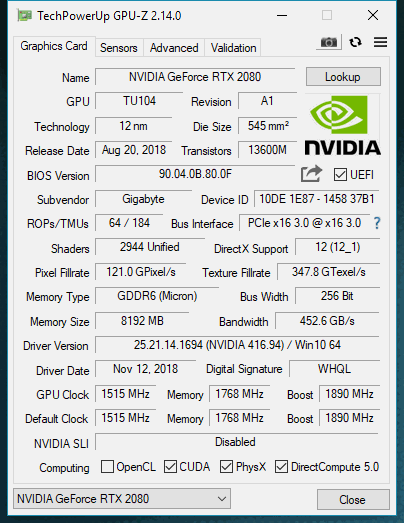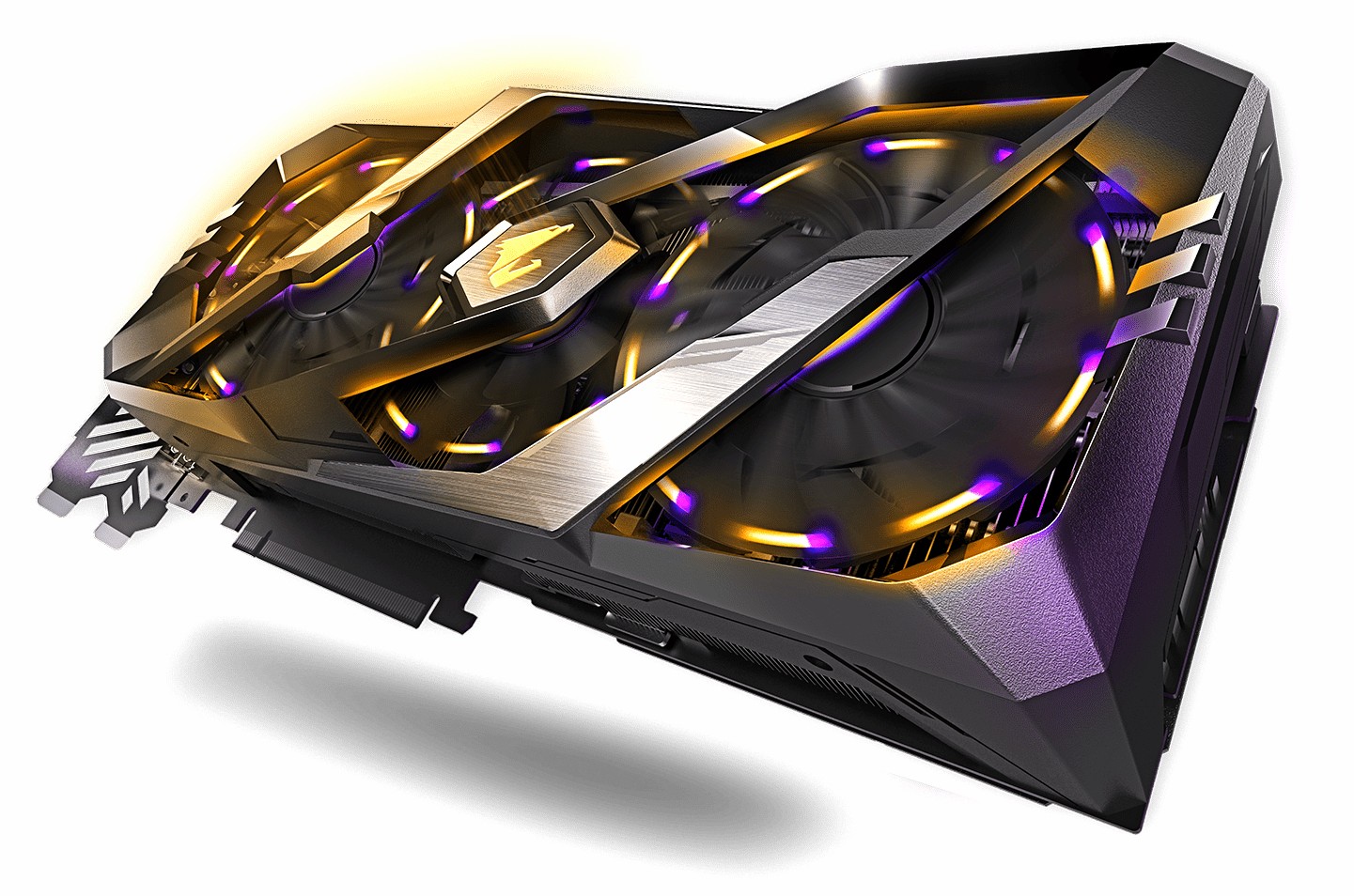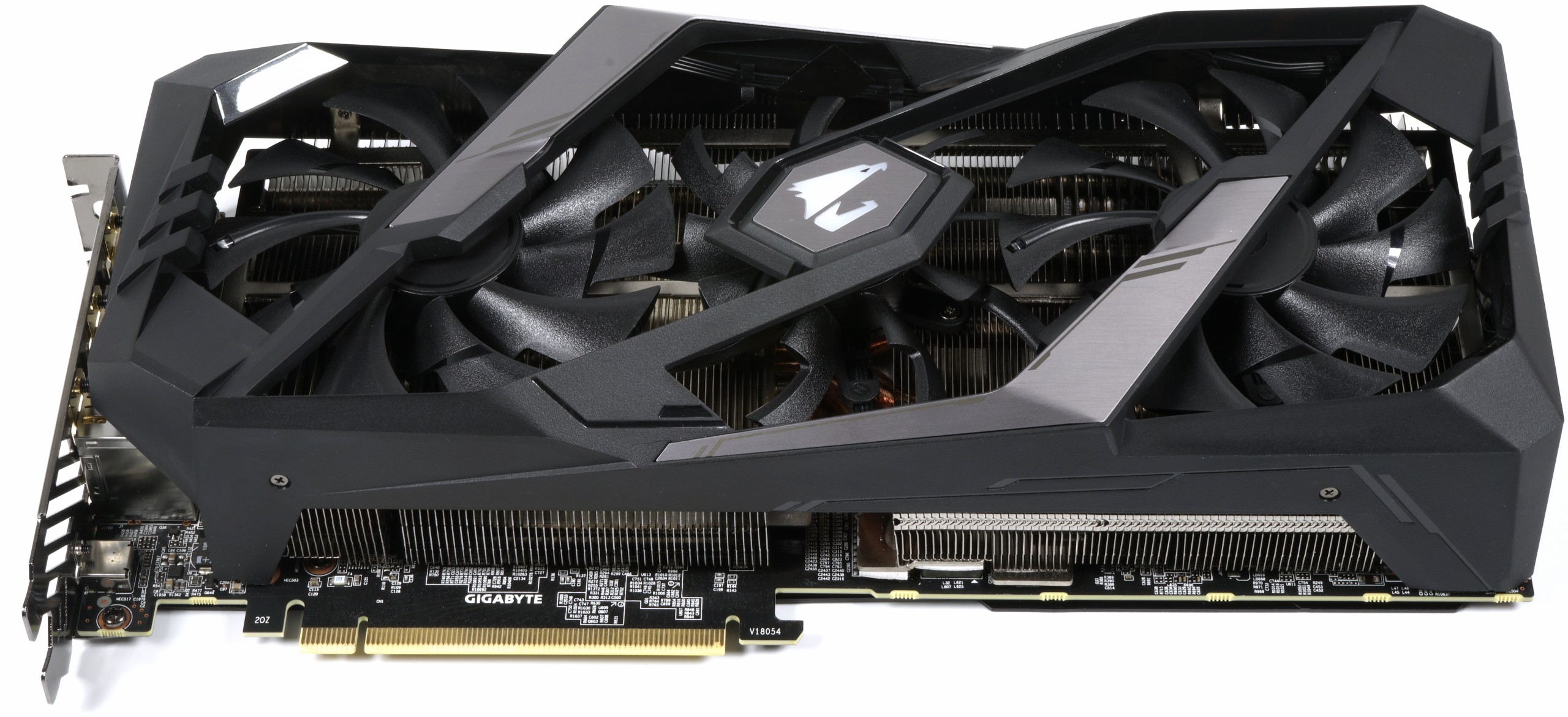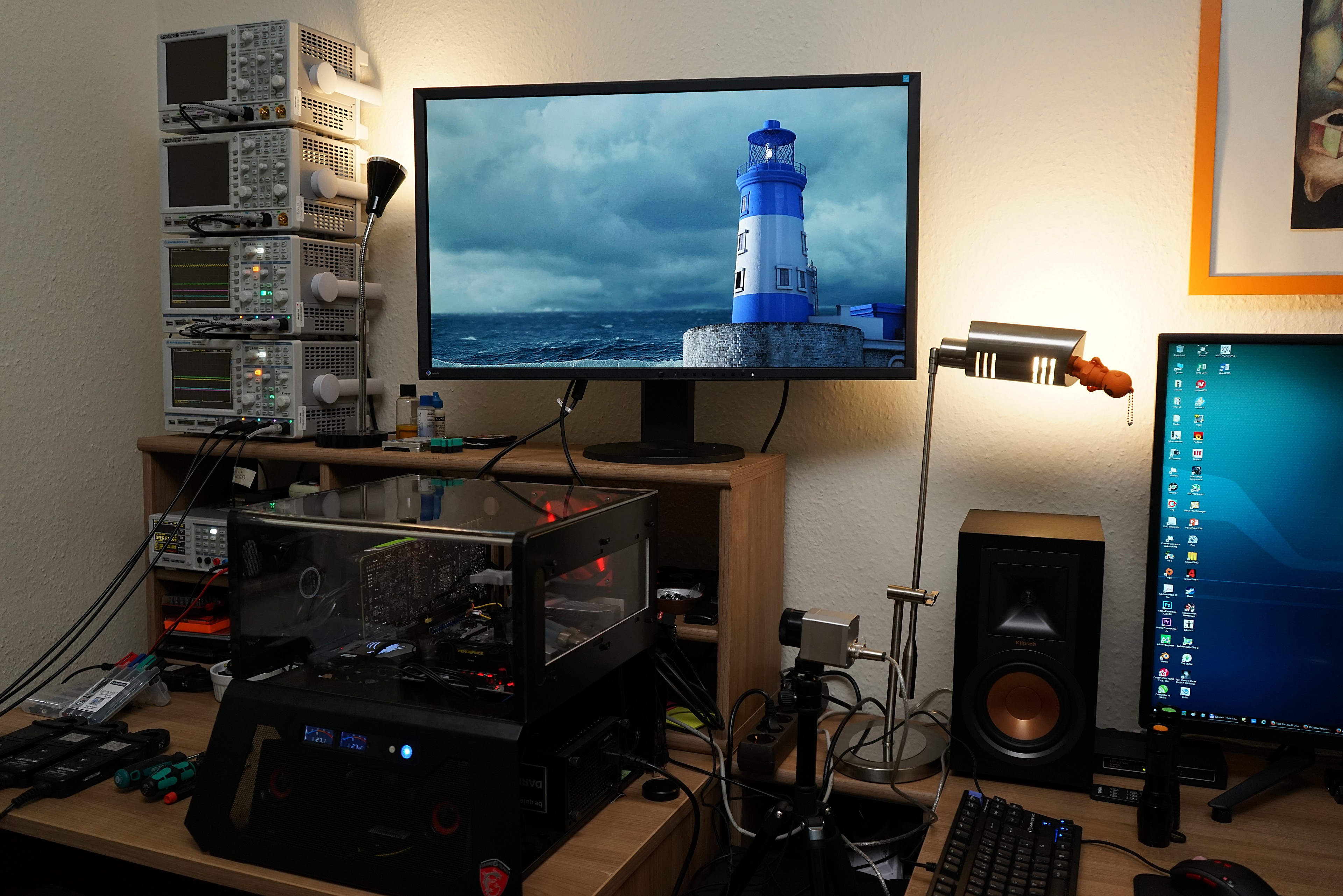RGB lettering on top? Has everyone. A nice RGB logo in the backplate? Yawn. Illuminated RGB fans? There are already. But what about real light effects on the rotor blades? Some people who are looking for the ultimate difference and would like to be paralyzed by the stroboscope effect will now sharpen their ears. At least that's what she must have thought of Gigabyte's marketing when planning the Aorus GeForce RTX 2080 Xtreme. Pleasantly more bling for the people, spoke the marketing and so it was built…
Seriously, however, Aorus has, in a way, started the RGB flight forward, which is not even negatively mean. Anyone who thinks you have such a glittering boliden in your PC will be able to give up your tedious search here and will certainly be settled in the long run. But you just have to like such a mouse cinema. And since everything has its price and of course with 1357 grams also its corresponding weight, one immediately gives the buyer a small-piece graphic card holder. support once interpreted differently, fits.
The heavy card is 29.7 cm long, measures 13 cm from top edge slot panel to top edge graphic card housing and is 5.2 cm thick. In addition, there is another 0.5 cm for the blackened backplate. This means that it can already encounter space problems if housings are too small. The cover is made of plastic in the base with mounted light metal applications in Gunmetal optics. And of course there is still a lot of (background) illuminated surface, including the rotor blades.
The rather large installation depth of more than 5 cm is also due to the two on-the-top fans and the counter-rotating fan in the middle, each with a rotor blade diameter of 9.5 cm, over which space is then required once again for the crossbar with the LED strips, which are used for the luminous effects. However, this blower-monumental structure also required compromises on the radiator itself, as we will see in the course of the test.
The solution with the video outputs is interesting. Aorus relies on a PI3WVR13612, i.e. a DP/HDMI video switch, which results in six connectivity options at the end with 3x HDMI 2.0 and 3x DisplayPort. Two of the DisplayPort ports correspond to two HDMI ports and can only be used optionally.
For multi-monitor systems with DisplayPort or VR glasses with 2x HDMI, this is a very elegant solution, because there are no more adapter problems. Otherwise, of course, Nvidia's restriction to a maximum of four simultaneously running output devices will apply to further.
Aorus delivers the card with two external 8-pin ATX power supply connectors, which will also be needed. But more the screenshot of GPU-Z gives us a first impression:

Technical data and comparison maps
At the end of this introduction, the maps of the new generation and those of the old generation in direct tabular comparison:
| Nvidia GeForce RTX 2080 Ti Fe |
Nvidia GeForce GTX 1080 Ti Fe |
Aorus GeForce RTX 2080 Xtreme |
Nvidia GeForce RTX 2080 Fe |
Nvidia GeForce GTX 1080 Fe |
|
| Architecture (GPU) |
Turing (TU102) | Pascal (GP102) | Turing (TU104) | Turing (TU104) | Pascal (GP104) |
| CUDA Cores |
4352 | 3584 | 2944 | 2944 | 2560 |
| Peak FP32 Compute |
14.2 TFLOPS | 11.3 TFLOPS | 11 TFLOPS | 10.6 TFLOPS | 8.9 TFLOPS |
| Tensor-Cores |
544 | No | 368 | 368 | No |
| RT-Cores |
68 | No | 48 | 48 | No |
| Texture Units |
272 | 224 | 184 | 184 | 160 |
| Basic clock |
1350 MHz | 1480 MHz | 1515 MHz | 1515 MHz | 1607 MHz |
| Boost clock |
1635 MHz | 1582 MHz | 1890 MHz | 1800 MHz | 1733 MHz |
| Memory |
11GB GDDR6 | 11GB GDDR5X | 8GB GDDR6 | 8GB GDDR6 | 8GB GDDRX5 |
| Storage bus |
352-bit | 352-bit | 256-bit | 256-bit | 256-bit |
| Memory bandwidth |
616 GB/s | 484 GB/s | 448 GB/s | 448 GB/s | 320 GB/s |
| Rops |
88 | 88 | 64 | 64 | 64 |
| L2 Cache |
5.5MB | 2.75MB | 4MB | 4MB | 2MB |
| Tdp |
260W | 250w | 250w | 225W | 180w |
| Transistors |
18.6 billion | 12 billion | 13.6 MRD | 13.6 billion | 7.2 billion |
| Chip size |
754 mm2 | 471 mm2 | 545mm2 | 545 mm2 | 314 mm2 |
| SLI Support |
Yes (x8 NVLink, x2) | Yes (MIO) | Yes (x8 NVLink) | Yes (x8 NVLink) | Yes (MIO) |
Test system and measurement methods
We have already described the new test system and the methodology in detail in the basic article "How We Test Graphics Cards, as of February 2017" and therefore refer to this detailed basis for simplicity. Description. So if you want to read everything again, you are welcome to do so. However, we have again improved CPU and cooling to largely exclude possible CPU bottlenecks for this fast card.
If you are interested, the summary in table form quickly provides a brief overview:
| Test systems and measuring rooms | |
|---|---|
| Hardware: |
Intel Core i7-6900K -4.5GHz MSI X99S XPower Gaming Titanium G.Skill TridentZ DDR4 3600 1x 1 TByte Toshiba OCZ RD400 (M.2, System SSD) 2x 960 GByte Toshiba OCZ TR150 (Storage, Images) Be Quiet Dark Power Pro 11, 850-watt power supply |
| Cooling: |
Alphacool Ice Block XPX 5x Be Quiet! Silent Wings 3 PWM (Closed Case Simulation) Thermal Grizzly Kryonaut (for cooler change) |
| Housing: |
Lian Li PC-T70 with expansion kit and modifications Modes: Open Benchtable, Closed Case |
| Monitor: | Eizo EV3237-BK |
| Power consumption: |
non-contact DC measurement on the PCIe slot (Riser-Card) non-contact DC measurement on the external PCIe power supply Direct voltage measurement on the respective feeders and on the power supply 2x Rohde & Schwarz HMO 3054, 500 MHz multi-channel oscillograph with memory function 4x Rohde & Schwarz HZO50, current togor adapter (1 mA to 30 A, 100 KHz, DC) 4x Rohde & Schwarz HZ355, touch divider (10:1, 500 MHz) 1x Rohde & Schwarz HMC 8012, digital multimeter with storage function |
| Thermography: |
Optris PI640, infrared camera PI Connect evaluation software with profiles |
| Acoustics: |
NTI Audio M2211 (with calibration file) Steinberg UR12 (with phantom power for the microphones) Creative X7, Smaart v.7 own low-reflection measuring room, 3.5 x 1.8 x 2.2 m (LxTxH) Axial measurements, perpendicular to the center of the sound source(s), measuring distance 50 cm Noise in dBA (Slow) as RTA measurement Frequency spectrum as a graph |
| Operating system | Windows 10 Pro (1803, all updates) |











































Kommentieren